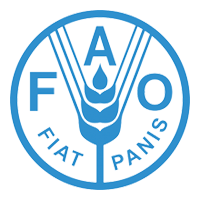Emerging Patterns in the Capacity Development Puzzle
Many capacity development (CD) programs and processes aim at long‐term sustainable change, which depends on seeing many smaller changes in at times almost invisible fields (rules, incentives, behaviours, power, coordination etc.). Yet, most evaluation processes of CD tend to focus on short‐term outputs focused on clearly visible changes. This paper will offer some ideas on how to deal with this paradox, by examining how monitoring and evaluation (M&E) does, or could, make a difference to CD. It explores whether there is something different and unique about M&E of CD that isn’t addressed by predominant methods and ways of thinking about M&E.
Related Resources
Agricultural Innovation in Latin America and the Caribbean: Institutional Scenarios and Mechanisms
Agriculture and food supply face a repositioning in the context of challenges associated with the Millennium Development Goals. From a development perspective it is of central importance to identify the role that the sector should perform in the fight against...
Institutional Learning and Change (ILAC) at ICRISAT: A Case Study of the Tata-ICRISAT Project
Institutional innovations are critical for effective performance of agricultural research centres in natural resource management projects that often include multiple and diverse stakeholders with contrasting objectives and activities. This report shows how institutional histories of projects can be used as...
Rural Innovation - Crucial, but rarely systemic
Innovation is largely held to be unlikely in rural regions. This reflects the current emphasis on regional innovations systems that are driven by large expenditures on formal science based activity that results in patentable outcomes. From this metric the observation...
Farmer-driven research to improve food and nutrition security
This briefing considers the status, systems, instruments and institutions underpinning agricultural innovation and research for development (ARD) globally and in the ACP countires. It puts a strong emphasis on lessons learnt and opportunities for successful agricultural innovation, based on broad...
Report: Creating Wealth with Seed Potatoes in Ethiopia
Wealth creation through integrated development of potato production brings together a wide range of positive livelihood changes for potato farmers in the highlands of Ethiopia (Nairobi, Kenya) The Common Fund for Commodities (CFC) released evaluation reports on a CFC-funded and...



